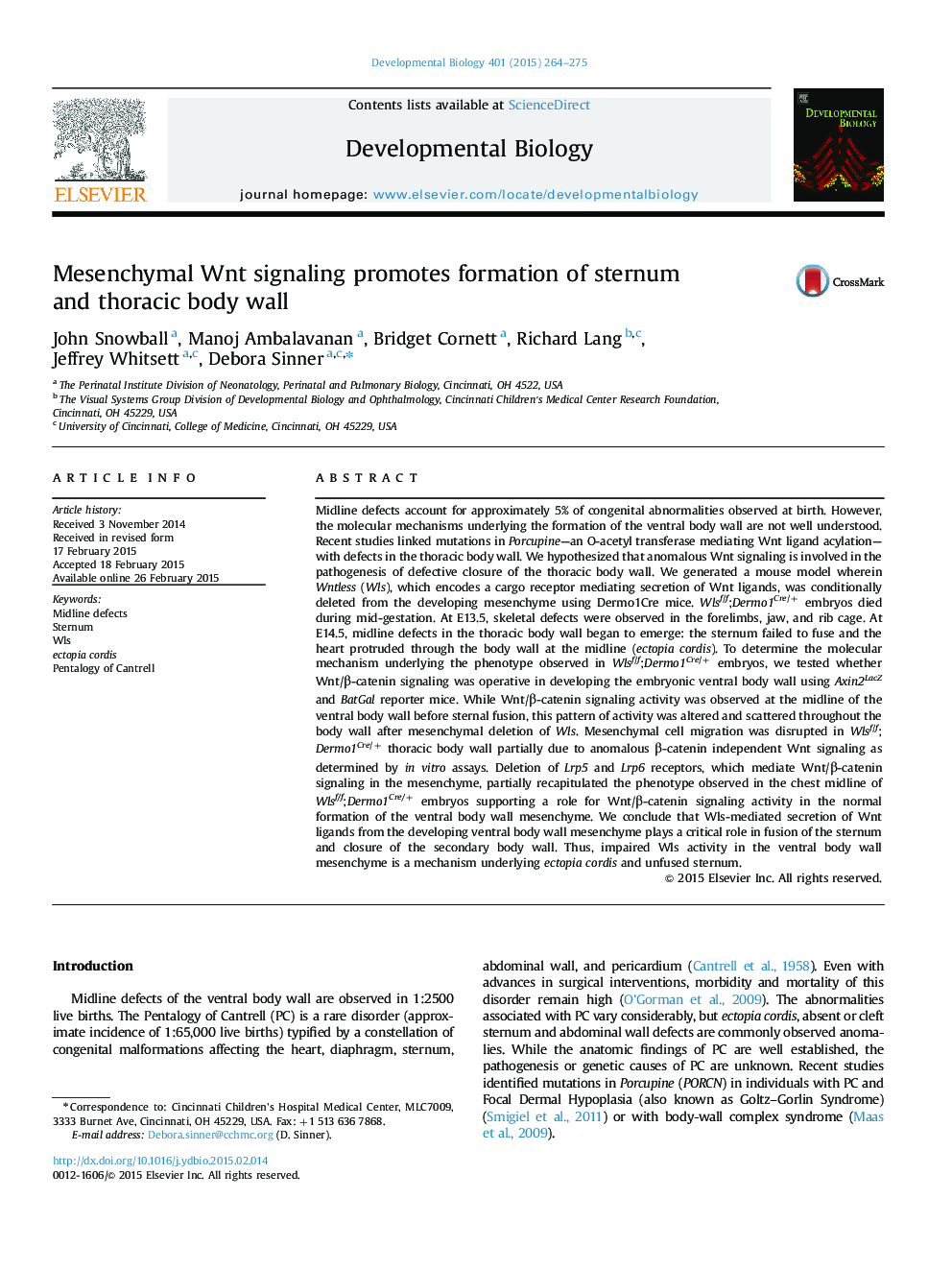| کد مقاله | کد نشریه | سال انتشار | مقاله انگلیسی | نسخه تمام متن |
|---|---|---|---|---|
| 2172863 | 1093635 | 2015 | 12 صفحه PDF | دانلود رایگان |

• Mesenchymal Wls activity is required for formation of the thoracic body wall.
• Canonical Wnt signaling is active at the body wall midline before sternum fusion.
• Mesenchymal Wnt ligands promote cell migration towards thoracic body wall midline.
• Apoptosis of mesenchymal cells at the midline precedes fusion of sternal bars.
Midline defects account for approximately 5% of congenital abnormalities observed at birth. However, the molecular mechanisms underlying the formation of the ventral body wall are not well understood. Recent studies linked mutations in Porcupine—an O-acetyl transferase mediating Wnt ligand acylation—with defects in the thoracic body wall. We hypothesized that anomalous Wnt signaling is involved in the pathogenesis of defective closure of the thoracic body wall. We generated a mouse model wherein Wntless (Wls), which encodes a cargo receptor mediating secretion of Wnt ligands, was conditionally deleted from the developing mesenchyme using Dermo1Cre mice. Wlsf/f;Dermo1Cre/+ embryos died during mid-gestation. At E13.5, skeletal defects were observed in the forelimbs, jaw, and rib cage. At E14.5, midline defects in the thoracic body wall began to emerge: the sternum failed to fuse and the heart protruded through the body wall at the midline (ectopia cordis). To determine the molecular mechanism underlying the phenotype observed in Wlsf/f;Dermo1Cre/+ embryos, we tested whether Wnt/β-catenin signaling was operative in developing the embryonic ventral body wall using Axin2LacZ and BatGal reporter mice. While Wnt/β-catenin signaling activity was observed at the midline of the ventral body wall before sternal fusion, this pattern of activity was altered and scattered throughout the body wall after mesenchymal deletion of Wls. Mesenchymal cell migration was disrupted in Wlsf/f;Dermo1Cre/+ thoracic body wall partially due to anomalous β-catenin independent Wnt signaling as determined by in vitro assays. Deletion of Lrp5 and Lrp6 receptors, which mediate Wnt/β-catenin signaling in the mesenchyme, partially recapitulated the phenotype observed in the chest midline of Wlsf/f;Dermo1Cre/+ embryos supporting a role for Wnt/β-catenin signaling activity in the normal formation of the ventral body wall mesenchyme. We conclude that Wls-mediated secretion of Wnt ligands from the developing ventral body wall mesenchyme plays a critical role in fusion of the sternum and closure of the secondary body wall. Thus, impaired Wls activity in the ventral body wall mesenchyme is a mechanism underlying ectopia cordis and unfused sternum.
Journal: Developmental Biology - Volume 401, Issue 2, 15 May 2015, Pages 264–275